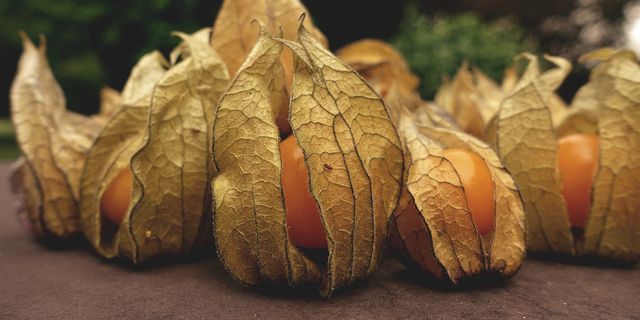Despite its South American origin, the physalis can also be planted in this country. Here you can find out how to do this and what care the healthy plant needs.
The physalis, also called Andean or Cape gooseberry, belongs to the nightshade family and originally comes from the South American Andes. The orange fruit is also popular in desserts and cakes in this country: However, the fruits from the supermarket have a long transport route behind them, which has a negative impact on the environment.
But that’s no reason to give up the delicious fruit, because you can also grow it in your own garden. Your own fruit is guaranteed organic and pesticide-free.
Planting physalis: Conditions and procedure

Growing physalis is not complicated. If you follow the instructions below, nothing should stand in the way of a bountiful harvest.
- Location: full sun and protected from wind
- Soil: loose and nutritious
- Sowing: start sowing in February and transplant into the bed in May.
- Distance between plants: 90 cm
Physalis grows best if you first grow them in advance. After preplanting, you can either plant the seedlings in the bed or individually in planters:
Fill small plant pots or seed trays with growing soil and sow the physalis seeds from the end of February. Be careful not to sow the seeds too densely, but with a few centimeters between them.
Make sure the pots are warm and bright so that the plants thrive optimally. Also, always keep the soil well moist. It’s best not to water with a can, but just spray the soil. This will prevent the seeds from being washed away.
Then cover the containers with a lid so that the resulting water vapor cannot escape completely. Put the lid on loosely, but do not close it tightly.
After one or two weeks, remove the lid from your seedlings.
In spring, you can plant the seedlings 90 centimeters apart in the bed. Alternatively, plant one plant at a time in a large container. However, it is important to wait until frost is no longer expected. The physalis cannot withstand frost.
Overall, despite its southern origin, physalis is quite a low-maintenance plant. Its biggest enemy is frost, because it does not withstand it. Other than that, here’s what you should keep in mind:
Properly care for physalis
Once the plants are in the bed, they need regular and generous watering. Make sure, however, that no waterlogging occurs.
You do not need to fertilize the Andean berry. It is sufficient to add normal compost.
The orange fruit is not very susceptible to diseases and pests. However, sometimes mold can appear if the weather is very humid. In the greenhouse, in rare cases, the plant is attacked by the so-called whitefly. What you can do about it: Fight whitefly: home remedies and valuable tips.









